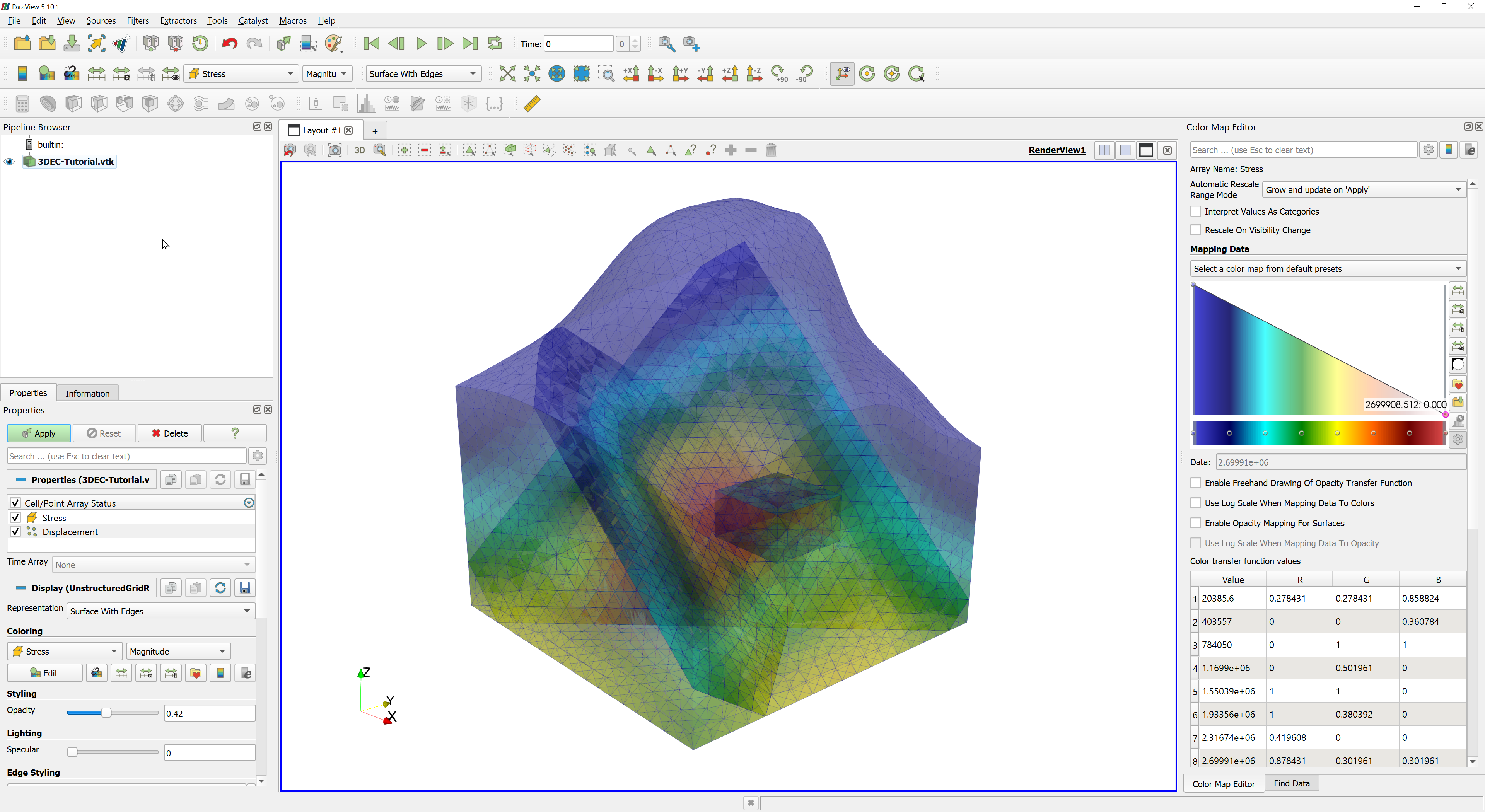As stated on the ParaView website:
ParaView is an open-source, multi-platform data analysis and visualization application. ParaView users can quickly build visualizations to analyze their data using qualitative and quantitative techniques. The data exploration can be done interactively in 3D or programmatically using ParaView’s batch processing capabilities. ParaView was developed to analyze extremely large datasets using distributed memory computing resources. It can be run on supercomputers to analyze datasets of petascale size as well as on laptops for smaller data, has become an integral tool in many national laboratories, universities and industry, and has won several awards related to high performance computation.
Why use ParaView?
Itasca's mining engineering consultants are more routinely running 50 - 100 million zone models using cloud computing. Analyzing such large models, especially while they are still running, can be difficult and transferring large save files can be time consuming. However, ParaView has been optimized for visualizing very large data sets and works with VTK (visual toolkit) library which contains a solid processing and rendering pipeline with many sophisticated visualization algorithms (Hopfer). ParaView offers two main benefits for extreme, cloud-based modeling:
- Analyze model results in ParaView while your model continues to run on FLAC3D or 3DEC.
- Quickly render model information and results, including interpolation, sections, and easily generate animations without the need to produce 100's or 1000's of bitmap files.
Other advantages include the following:
- Rapid assessment of model input and output: point cloud, VTK, and STL files can be interpolated and assessed rapidly.
- Rapid assessment of large datasets where large (>50 million zones) VTK datasets can be loaded and viewed quickly.
- Multiple sub-models can be joined and interrogated as a single dataset.
- A large set of tools to for data assessment and visualization. with powerful interpolation and interrogation tools.
- Time sequence (model steps) can be easily implemented, allowing for visualization of changes over time.
- ParaView has been continuously updated and supported for more than 20 years with a vibrant community (support, examples, forums).
- Model results are transparent and can be reviewed or analyzed by your team or client. Allowing for deeper exploration of the modal results or consecration of different interpolations, sections, or design criteria, which is especially useful for very complex, 3D, underground mining designs.
- Data files are significantly smaller compared to *.sav files. For example, a FLAC3D save file that is 25 GB can be as small as 160 MB as a ParaView (*.VTU) file.
- Easily store and transfer data files.
- Easily transfer files from AWS Cloud or remote computers quickly.
- More quickly review and analyze results, even while your model continues to run.
How can I work with ParaView?
Itasca has made it easy to readily export model data from FLAC3D and 3DEC software (version 7+) using the VTK file format via built-in commands to export the following model data (over some range):
- displacements
- zone extra variables
- gridpoint extra variables
- unbalanced force information
- groups/slots
- model-fluid properties
- model-mechanical properties
- model-thermal properties
- pore-pressure
- saturation
- average stresses in each zone
- temperatures
- velocities
For 3DEC: block vtk keyword <range> See Online Documentation
For FLAC3D: zone vtk keyword <range> See Online Documentation
When using these commands it is important to use each keyword independently, similar to Itasca results, and not as a single command. For example, to export displacements, stresses, and groups from 3DEC:
Block VTK displacements on
Block VTK stresses on
Block VTK group on
Block VTK filename 'example.vtu'
It is important to specify the filename using the *.vtu extension. Using the *.vtk extension will only include stresses and displacements and will require you to specify a ParaView reader (such as the XML Unstructured Grid Reader) upon data file import.

